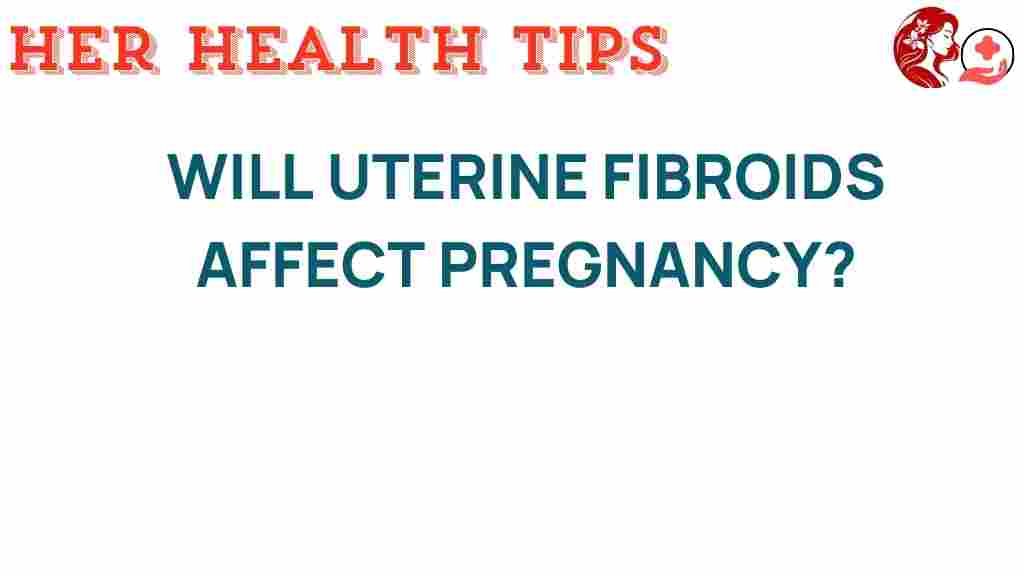Do Uterine Fibroids Impact Your Chances of Pregnancy?
Uterine fibroids are non-cancerous growths that develop in the muscular wall of the uterus. They are a common condition affecting women of reproductive age and can have implications for pregnancy and overall women’s health. Understanding how uterine fibroids impact fertility and pregnancy is crucial for women who are trying to conceive. This article will explore the relationship between uterine fibroids and pregnancy, discussing diagnosis, treatment options, and the importance of awareness regarding this condition.
What Are Uterine Fibroids?
Uterine fibroids, also known as leiomyomas or myomas, are benign tumors that can vary in size, shape, and location within the uterus. They can be classified into different types based on their position:
- Intramural Fibroids: These grow within the uterine wall.
- Subserosal Fibroids: These protrude from the outer wall of the uterus.
- Submucosal Fibroids: These develop just under the inner lining of the uterus.
While many women with uterine fibroids experience no symptoms, some may face complications that affect their reproductive health.
How Do Uterine Fibroids Affect Fertility and Pregnancy?
The impact of uterine fibroids on fertility and pregnancy can vary depending on the size, type, and location of the fibroids. Here are some key points to consider:
- Location Matters: Submucosal fibroids are most likely to interfere with pregnancy because they can distort the uterine cavity, affecting embryo implantation.
- Size and Number: Larger fibroids or multiple fibroids can cause complications such as increased uterine pressure and reduced space for the developing fetus.
- Complications During Pregnancy: Women with fibroids may face complications including preterm labor, placental abruption, or abnormal fetal positioning.
Diagnosis of Uterine Fibroids
Diagnosing uterine fibroids typically involves a combination of medical history review, physical examination, and imaging tests. Common diagnostic methods include:
- Pelvic Exam: A healthcare provider may feel for abnormalities in the uterus during a pelvic examination.
- Ultrasound: This imaging technique uses sound waves to create a picture of the uterus, helping to identify fibroids.
- Magnetic Resonance Imaging (MRI): An MRI can provide a detailed view of the uterus and the size and location of fibroids.
Early diagnosis is crucial for managing symptoms and addressing potential fertility issues.
Treatment Options for Uterine Fibroids
When it comes to treating uterine fibroids, the approach can vary based on the severity of symptoms, size of the fibroids, and the woman’s reproductive plans. Treatment options include:
- Watchful Waiting: If fibroids are small and asymptomatic, a healthcare provider may recommend monitoring them over time.
- Medications: Hormonal treatments can help shrink fibroids or manage symptoms, such as heavy menstrual bleeding.
- Surgical Options:
- Myomectomy: This procedure involves the surgical removal of fibroids while preserving the uterus, making it suitable for women who wish to maintain their fertility.
- Hysterectomy: In cases of severe symptoms or when a woman does not wish to become pregnant, a hysterectomy may be recommended to remove the uterus entirely.
- Minimally Invasive Procedures: Techniques such as uterine artery embolization can reduce blood flow to fibroids, causing them to shrink.
Consulting with a healthcare provider is essential to determine the best treatment plan for individual circumstances.
Awareness and Education
Raising awareness about uterine fibroids is vital for women’s health. Many women may not be aware of their fibroids or the potential implications for pregnancy and fertility. Education can empower women to seek timely medical advice and treatment. Here are some steps to foster awareness:
- Regular Check-ups: Encourage women to have regular gynecological exams to monitor their reproductive health.
- Educational Resources: Utilize online platforms and community outreach to disseminate information about uterine fibroids.
- Support Groups: Joining support groups can help women share experiences and learn from one another.
For more information on uterine fibroids and their impact on reproductive health, visit resources like the American College of Obstetricians and Gynecologists.
Step-by-Step Process for Managing Uterine Fibroids
If you suspect you have uterine fibroids and are concerned about their impact on your chances of pregnancy, follow this step-by-step process:
- Recognize Symptoms: Be aware of symptoms such as heavy menstrual bleeding, pelvic pain, or pressure. If you experience these, consult a healthcare provider.
- Schedule an Appointment: Book an appointment with your gynecologist for a thorough evaluation.
- Follow Diagnostic Procedures: Undergo recommended tests, such as ultrasounds or MRIs, to confirm the presence and type of fibroids.
- Discuss Treatment Options: Based on the diagnosis, discuss potential treatment strategies with your healthcare provider.
- Monitor Your Health: Once treatment is initiated, continue to monitor your health and communicate any changes to your provider.
Troubleshooting Common Concerns
Women may have various concerns regarding uterine fibroids and their impact on pregnancy. Here are some common issues and troubleshooting tips:
- Concern: Can I still get pregnant with fibroids?
- Tip: Many women with fibroids conceive successfully. Consult your doctor to assess the size and location of the fibroids.
- Concern: Will fibroids affect my pregnancy?
- Tip: While fibroids can cause complications, many women with fibroids have healthy pregnancies. Regular prenatal care is vital.
- Concern: What should I do if I experience complications during pregnancy?
- Tip: Seek immediate medical attention if you experience severe pain or bleeding during pregnancy.
Conclusion
Uterine fibroids can impact a woman’s ability to conceive and may lead to complications during pregnancy. However, with appropriate diagnosis and treatment, many women can successfully manage their fibroids and achieve healthy pregnancies. It is essential for women to be proactive about their reproductive health, seek medical advice, and stay informed about uterine fibroids.
Raising awareness and understanding the implications of uterine fibroids can empower women to make informed decisions about their health. If you have concerns about uterine fibroids and their effect on your fertility or pregnancy, do not hesitate to reach out to a healthcare professional for guidance and support.
For more resources on women’s health and reproductive health, visit WomensHealth.gov for valuable information.
This article is in the category Reproductive and created by HerHealthTips Team
